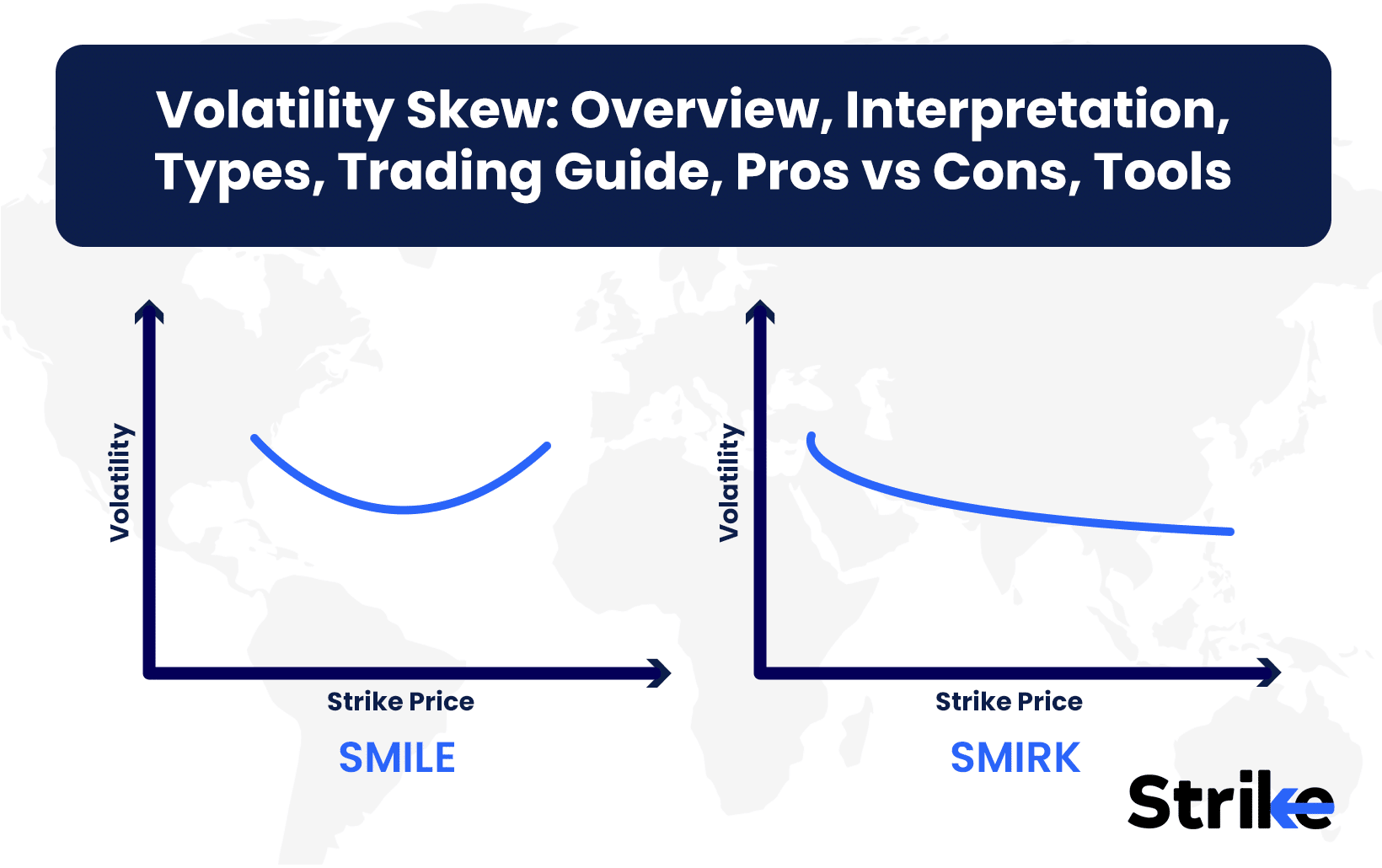
Volatility skew is the uneven distribution of implied volatility across option strikes with the same expiry. Volatility skew is one of the most important concepts in modern options trading because it shapes pricing, signals sentiment, and influences strategy selection.
In theory, the Black-Scholes model assumes a flat volatility curve. In practice, markets rarely follow this assumption. Implied volatility across strikes often bends into patterns like a smile, smirk, forward skew, or reverse skew. These shapes arise because traders value protection and speculation differently at various strikes.
What Is Volatility Skew?
Volatility skew is the difference in implied volatility between options of the same expiry but different strikes. Instead of implied volatility being constant, it varies depending on whether an option is OTM, ATM, or ITM.
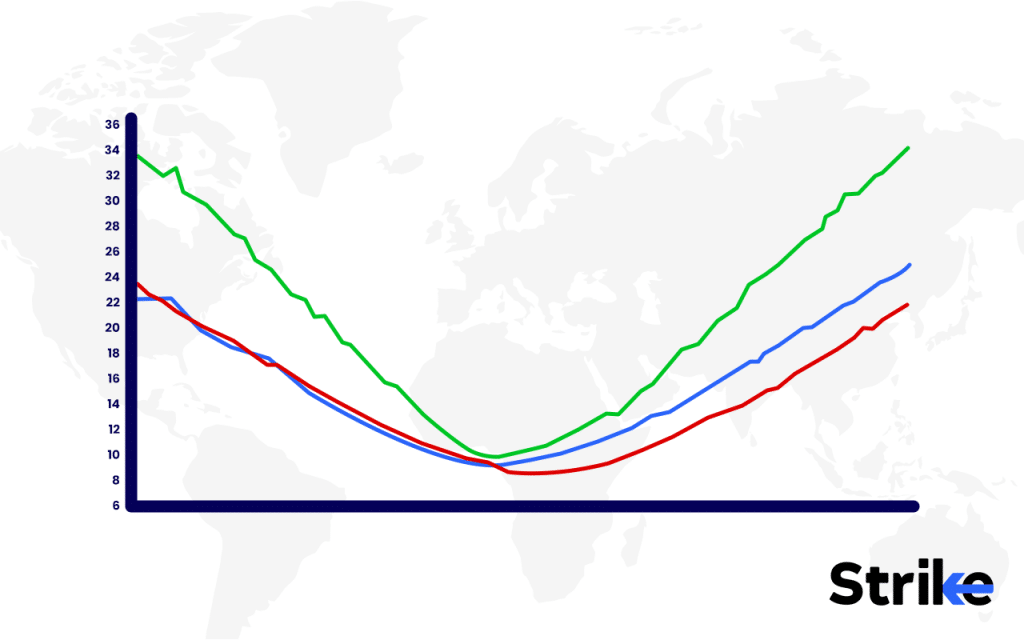
For example, assume the Nifty index is at 20,000. The ATM option has an implied volatility of 18%. The 21,000 call trades with 22% IV, while the 19,000 put has 26% IV. This uneven distribution forms a skew, with puts trading at higher volatility than calls.
Traders pay close attention to this curve because it directly affects premiums. If skew is steep, OTM puts become disproportionately expensive, which increases the cost of downside hedges. On the other hand, a flat or inverted skew changes how spreads are priced.
Skew essentially captures the collective psychology of the market. Equity indices often exhibit reverse skew because investors buy puts for protection. Commodities and currencies sometimes show forward skew due to speculative or hedging demand for calls. Understanding this distinction helps traders avoid blindly applying models like Black-Scholes, which assume flat volatility.
What Causes Volatility Skew?
Volatility skew is caused by market demand, risk premiums, and asymmetric probability assumptions. These forces explain why some strikes consistently trade at higher IV than others.
- Supply and demand imbalance: Traders often buy OTM puts as insurance, raising their IV. Similarly, demand for OTM calls in commodities pushes their IV higher.
- Risk premium for protection: Investors pay more for downside hedges than upside bets. This premium results in puts usually being more expensive in equity markets.
- Tail risk expectations: Markets believe extreme downside moves are more likely than extreme upside rallies. This asymmetry steepens put skew.
- Event-driven demand: Before earnings, elections, or macro announcements, both calls and puts may rise in IV, creating a smile pattern.
For example, during the COVID-19 market crash, index options displayed extreme reverse skew. Puts carried massive premiums because traders rushed for insurance. Conversely, in commodities like crude oil, forward skew often dominates as traders hedge against supply shocks by buying calls.
How is Volatility Skew Measured?
Volatility skew is measured by comparing implied volatilities of options across different strikes. Traders rely on slope metrics and spread measures to quantify skew.
- Implied Volatility by Strike: The simplest method is plotting IV against strike prices. A flat line means no skew, while a slope or curve signals skew presence.
- Risk Reversal (RR): The difference between IV of a 25-delta call and a 25-delta put. A negative RR means puts are more expensive, while a positive RR means calls are pricier.
- Butterfly Spread (BF): Butterfly Spread measures curvature of IV by comparing IV of ATM against wing strikes. Larger butterfly values mean stronger smile patterns.
- Slope Analysis: Traders calculate the slope between two equidistant OTM strikes. A steep slope suggests strong skew bias.
Suppose Bank Nifty ATM IV is 20%. The 25-delta call trades at 22%, while the 25-delta put trades at 28%. The risk reversal = 22% – 28% = -6. This indicates a strong reverse skew with puts more expensive.
Professional traders track these metrics daily to assess hedging flows and adjust strategies accordingly.
How to Read a Volatility Skew Curve
A volatility skew curve is read by plotting strike price on the x-axis and implied volatility on the y-axis. The resulting slope reveals which side of the market is being overpriced.
Step-by-step approach
- Identify ATM strike and note its IV.
- Plot IV of OTM calls on the right and OTM puts on the left.
- Connect points to visualize the curve.
Possible shapes
- Forward skew: Rising curve towards calls, showing higher demand for upside.
- Reverse skew: Rising curve towards puts, showing higher demand for protection.
- Smile: U-shaped, where both OTM puts and calls trade at higher IV than ATM.
- Smirk: Tilted curve, often with puts higher than calls.
For example, before a company’s earnings release, both OTM calls and puts may rise, creating a smile. During market panics, the curve steepens towards puts, creating a reverse skew.
Traders use this curve to identify overpriced strikes and decide which side of the market to sell or buy. A steep skew often signals overpricing that can be exploited with spreads.
Why Volatility Skew Matters to Traders
Volatility skew matters because it shapes option pricing, trading strategies, and market sentiment analysis. A trader ignoring skew risks paying inflated premiums or mismanaging risk exposure.
Premiums are directly affected by skew. If puts trade at higher IV than calls, downside strikes become more expensive, increasing hedging costs. For example, during volatile periods, traders hedging portfolios with puts often pay a significant skew premium.
Skew also guides spread construction. A steep reverse skew allows traders to sell overpriced puts and hedge with cheaper strikes, creating favorable risk-reward setups. Similarly, when calls trade with forward skew, strategies like covered calls or ratio spreads become more attractive.
It also serves as a sentiment indicator. A sharp increase in put skew signals rising fear, while call skew signals bullish speculation. Monitoring skew over time helps traders anticipate shifts in positioning.
For risk management, skew provides valuable insight into the cost of protection. Portfolio managers track skew daily to assess the market’s appetite for insurance. By comparing current skew to historical averages, traders can determine whether hedges are cheap or expensive.
What are The Different Types of Volatility Skew?
The main types of volatility skew are forward skew, reverse skew, smile, and smirk. Each type reflects a different balance of fear, speculation, and event-driven uncertainty.
Forward Skew
Forward skew occurs when out-of-the-money calls trade at higher implied volatility than puts. It reflects strong demand for upside exposure.
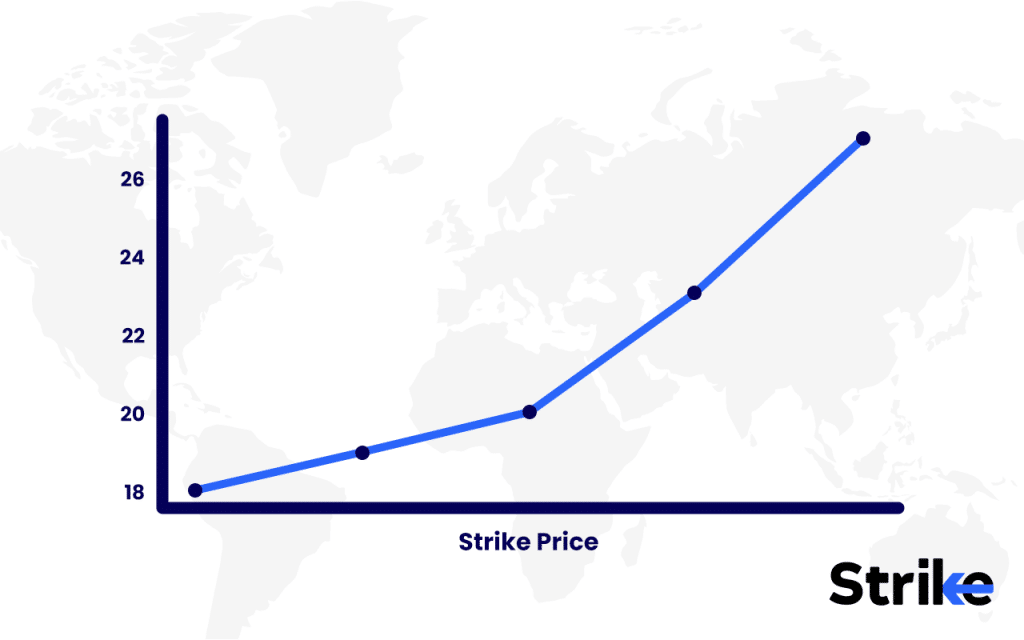
This shape is common in commodities and currencies. For example, in crude oil, supply disruptions cause traders to pay higher premiums for calls. In equity markets, forward skew sometimes appears during strong bull runs where traders anticipate extended rallies.
Forward skew benefits strategies such as selling OTM calls or constructing call spreads. It warns traders that bullish demand has pushed call premiums higher relative to puts.
Reverse Skew
Reverse skew means OTM puts carry higher implied volatility than calls. This is the standard pattern in equity indices.
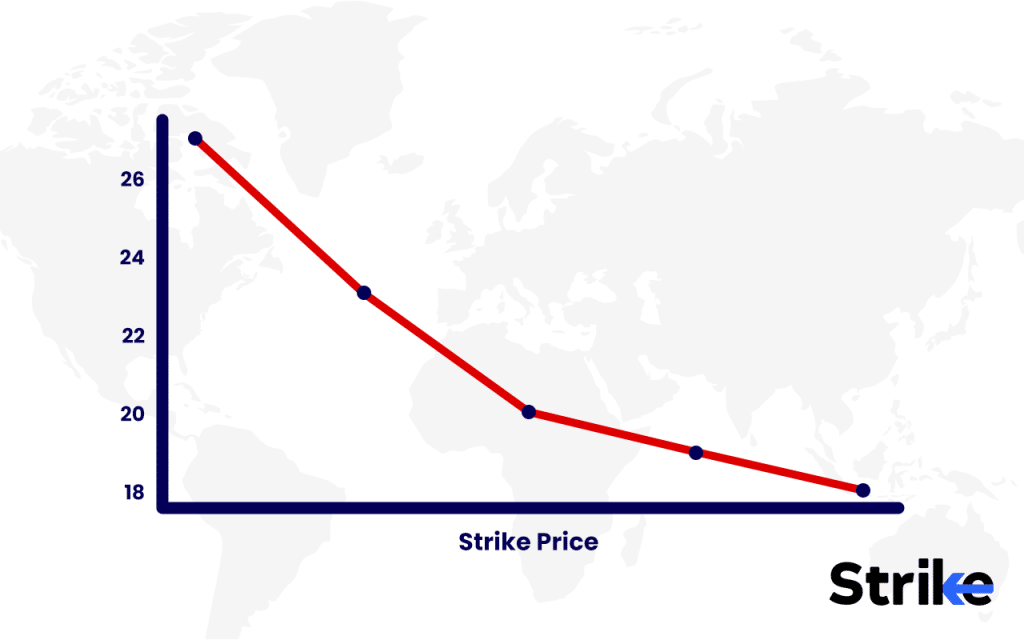
It reflects investors’ willingness to pay extra for downside protection. For instance, during global crises, put skew steepens dramatically as demand for insurance surges.
Traders use this to sell inflated puts or build ratio spreads that benefit from expensive downside premiums. Reverse skew also highlights the market’s asymmetric fear of declines versus rallies.
Smile Skew
Smile skew is a U-shaped curve where both OTM calls and puts trade at higher IV than ATM options. It signals two-sided risk expectations.
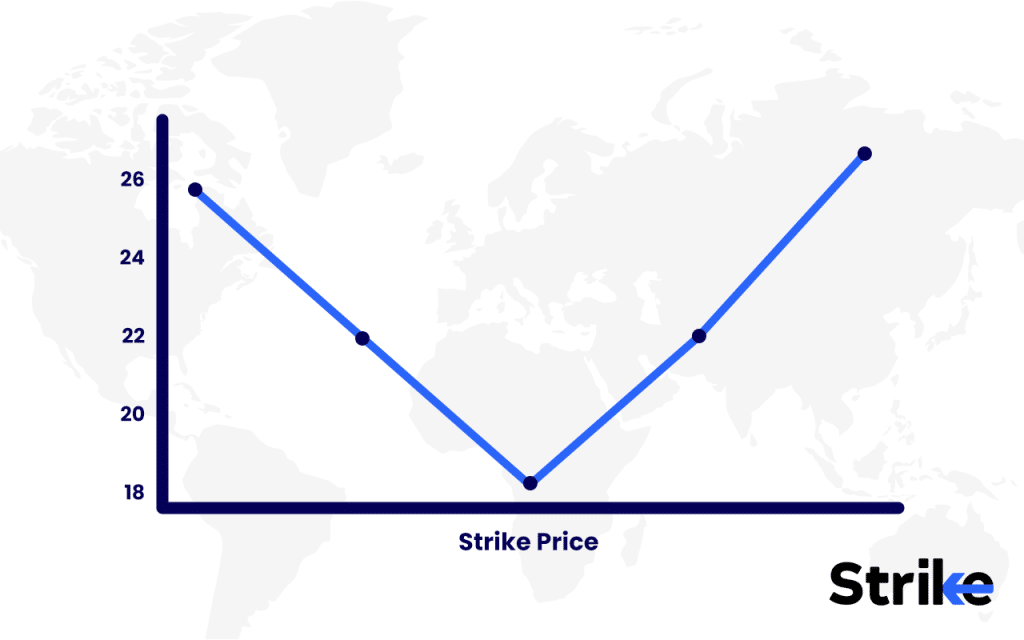
Smiles appear before earnings, central bank meetings, or geopolitical events. Traders hedge both upside and downside, driving premiums higher at the tails.
Strategies suited for smiles include straddles and strangles. These exploit large moves in either direction, aligning with the elevated IV on both sides.
Smirk Skew
Smirk skew tilts the curve with one tail significantly higher, usually puts. It signals stronger fear on one side of the distribution.
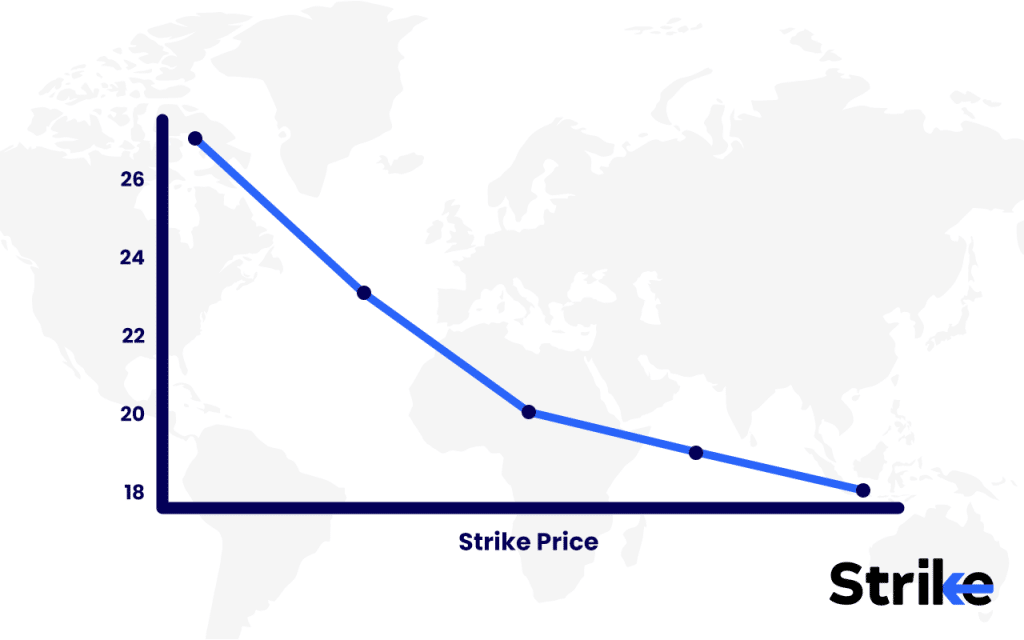
Equities often show smirks because downside crashes are more feared than upside surges. For example, after a sharp rally, investors hedge portfolios by buying puts, lifting their IV.
Trading the smirk involves exploiting overpriced puts by selling them in spreads or hedging exposure with cheaper calls.
The dynamic nature means skew must be tracked continuously. Traders use daily skew charts to anticipate changes and align strategies with the evolving curve.
How to Trade Using Volatility Skew
Trading volatility skew involves exploiting relative mispricing across strikes. Traders design strategies that take advantage of overpriced options while hedging with underpriced ones.
Example: Suppose Nifty shows steep reverse skew with 18,500 puts trading at 28% IV while ATM trades at 20%. A trader could:
- Sell OTM puts to collect inflated premiums.
- Construct put ratio spreads to benefit from high downside IV.
- Buy calls if they appear cheap relative to puts.
For forward skew cases, where calls are expensive, strategies like bear call spreads or covered calls are attractive. Smiles often invite straddles or strangles before earnings announcements.
The key is to align strategy with skew type:
- Identify skew curve shape.
- Compare premiums across strikes.
- Select spreads that exploit skew bias.
- Adjust after events when skew normalizes.
Professional traders track skew daily alongside volume, open interest, and technical support levels.
What are the Pros vs Cons of Volatility Skew?
Volatility skew offers traders useful insights but introduces complexity and risk. It is both a signal and a challenge.
| Pros | Cons |
| Reveals market sentiment and fear | Interpretation requires skill and experience |
| Improves strategy design and strike selection | Skew changes rapidly around events |
| Helps in risk management and hedge cost analysis | Models like Black-Scholes fail to capture skew perfectly |
| Provides opportunities to sell overpriced options | Incorrect read can lead to losses |
Skew adds an extra layer of sophistication. For prepared traders, it creates opportunities, but for beginners, it increases the risk of misjudging markets.
What Tools can I use to Visualize and Analyze Volatility Skew?
Tools for skew analysis help traders see IV curves and compare strike prices easily. These platforms provide option chain visuals, payoff charts, and Greeks.
- Strike Money: Offers full skew curve, Greeks, payoff charts, and backtesting.
- Sensibull: Integrated with brokers like Zerodha and Upstox, shows IV surfaces and allows strategy building.
- Quantsapp: Focused on retail options traders, provides skew visualization with OI overlays.
- TradingView: Limited skew analysis, but excellent for charting and custom indicators.
- Broker apps (Zerodha, Angel One, Dhan): Provide basic IV charts, though less advanced.
Professional traders use Bloomberg Terminal and Reuters Eikon, which offer global skew analysis. Retail traders rely mainly on Strike, Sensibull, and Quantsapp.
How does Volatility Skew Impact Options Pricing?
Volatility skew impacts option pricing by making premiums strike-dependent. Options at the same expiry cost different amounts based on whether they are puts or calls and how far they sit from the money.
For instance, in a reverse skew, OTM puts have much higher implied volatility than ATM calls. This inflates the premium of puts relative to their theoretical Black-Scholes value. Traders hedging portfolios against crashes often pay this higher price. Conversely, if a forward skew is present, OTM calls carry more premium, reflecting bullish demand or commodity supply concerns.
The impact extends to Greeks. Vega exposure differs depending on skew—an OTM put in a steep reverse skew reacts more sharply to volatility changes than a call of similar delta. Gamma and delta hedging become complicated when skew shifts rapidly, because the relationship between volatility and price is not uniform across strikes.
Skew also alters spread valuation. In a steep reverse skew, selling OTM puts in a credit spread yields more premium, while in forward skew, selling calls offers higher returns. Understanding this dynamic allows traders to identify whether an option is overpriced or underpriced compared to peers.
How does the Black-Scholes Model Relate to Volatility Skew?
The Black-Scholes model assumes constant volatility, but skew shows this assumption fails in practice. In the real world, implied volatility varies across strikes and expiries.
Black-Scholes produces a flat line for IV when plotted against strikes. However, actual markets display curves shaped like smiles or smirks. This gap between theory and practice is why traders prefer implied volatility surfaces to Black-Scholes inputs.
To adapt, traders use local volatility models and stochastic volatility models. Local models adjust volatility depending on strike and maturity, while stochastic models assume volatility itself moves randomly, better matching market observations.
The existence of skew demonstrates why relying purely on Black-Scholes leads to mispricing. Professional traders always adjust model assumptions to include volatility surfaces or skew adjustments.
Is Volatility Skew Constant?
No, volatility skew is not constant because it shifts with sentiment, time, and events. What looks like a smirk today might flatten or invert tomorrow depending on market conditions.
Earnings announcements are a classic driver. Before results, both calls and puts rise in IV, forming a smile. After results, skew flattens as uncertainty disappears. Macro announcements like Union Budgets or Federal Reserve decisions steepen skew before the event and normalize afterward.
Crisis periods amplify skew. During the 2008 crash and COVID-19 shock, put skew in equity indices exploded as investors scrambled for protection. In calmer periods, skew returns closer to flat.
How does Volatility Skew Change Over Time?
Volatility skew changes by steepening or flattening around events and across market cycles. Traders study these shifts to anticipate risk.
- Before earnings or data releases: Both OTM puts and calls rise in IV, forming a smile. Traders expect large moves in either direction.
- During market stress: Reverse skew steepens as puts become extremely expensive due to hedging demand.
- Post-event normalization: Once uncertainty clears, skew flattens as demand for insurance drops.
- Over longer cycles: Skew gradually drifts depending on macroeconomic trends, liquidity, and risk appetite.
A chart of Nifty skew over one month typically shows steepening into RBI meetings and flattening afterward. Active traders track these cycles to time entry into spreads or straddles.
What does a Positive Volatility Skew Mean?
A positive volatility skew means calls are priced with higher implied volatility than puts. It reflects strong bullish demand or hedging for upside risk.
Positive skew often appears in commodities like crude oil, where supply shocks push call premiums higher. In equities, it can surface during strong bull markets when traders speculate on extended rallies.
The interpretation is that traders expect or fear significant upward movement. Selling overpriced calls through covered calls or call spreads becomes a viable strategy in this environment.
What does a Negative Volatility Skew Mean?
A negative volatility skew means puts are priced with higher implied volatility than calls. This is the most common form in equity indices.
It reflects hedging pressure and downside fear. For example, before major elections or global financial shocks, index puts often trade at inflated IV. This skew signals that traders are willing to pay more to protect against a crash.
The trading implication is that downside insurance is expensive. Selling OTM puts through spreads or ratios allows traders to monetize that fear premium while staying hedged.
What Does a Steep Volatility Skew Indicate?
A steep volatility skew indicates very high demand for protection or speculation at specific strikes. It signals that the market is anticipating large moves or tail events.
When skew steepens toward puts, it shows panic hedging. Investors fear sharp downside, and hedging costs surge. When skew steepens toward calls, it shows speculative bullish demand or hedging against supply shortages in commodities.
A steep skew helps traders judge whether options are mispriced relative to history. Selling overpriced options in spreads or hedging positions against steep skew moves becomes a key strategy.
What’s the Difference Between Volatility Skew, Volatility Smile & Volatility Smirk?
The difference lies in shape and interpretation. Skew describes the general slope of IV across strikes, while Volatility Smile and Volatility Smirk are specific curve patterns.
| Feature | Volatility Skew | Volatility Smile | Volatility Smirk |
| Definition | General unevenness of IV across strikes | U-shaped curve where both tails are higher than ATM | Tilted curve with one tail higher (usually puts) |
| Shape | Can slope forward or reverse | Symmetrical U-shape | Asymmetrical curve |
| Common in | Equities (reverse skew) and commodities (forward skew) | Events like earnings, elections, Fed meetings | Equity indices where downside risk dominates |
| Interpretation | Shows which side is overpriced | Traders expect two-sided risk | Traders fear one-sided risk (usually downside) |
| Trading Uses | Guides spread construction | Favor straddles/strangles | Favor put spreads, ratios |
Markets rarely trade with flat implied volatility. Instead, curves bend into smiles, smirks, or directional skews, shaped by hedging demand and speculation. By measuring skew and tracking its changes, traders gain an edge in selecting strikes, reading sentiment, and timing trades.

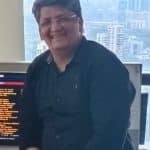

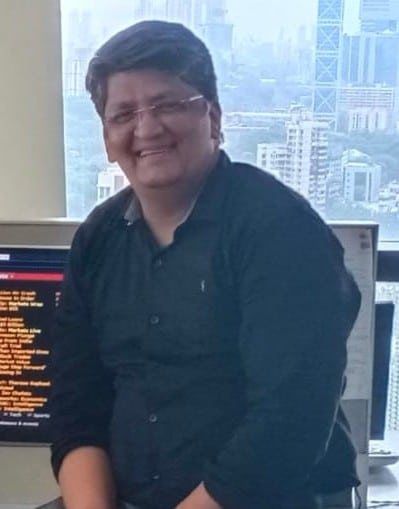
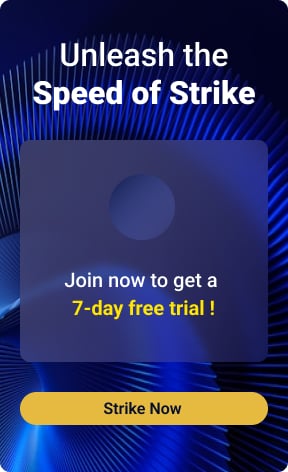
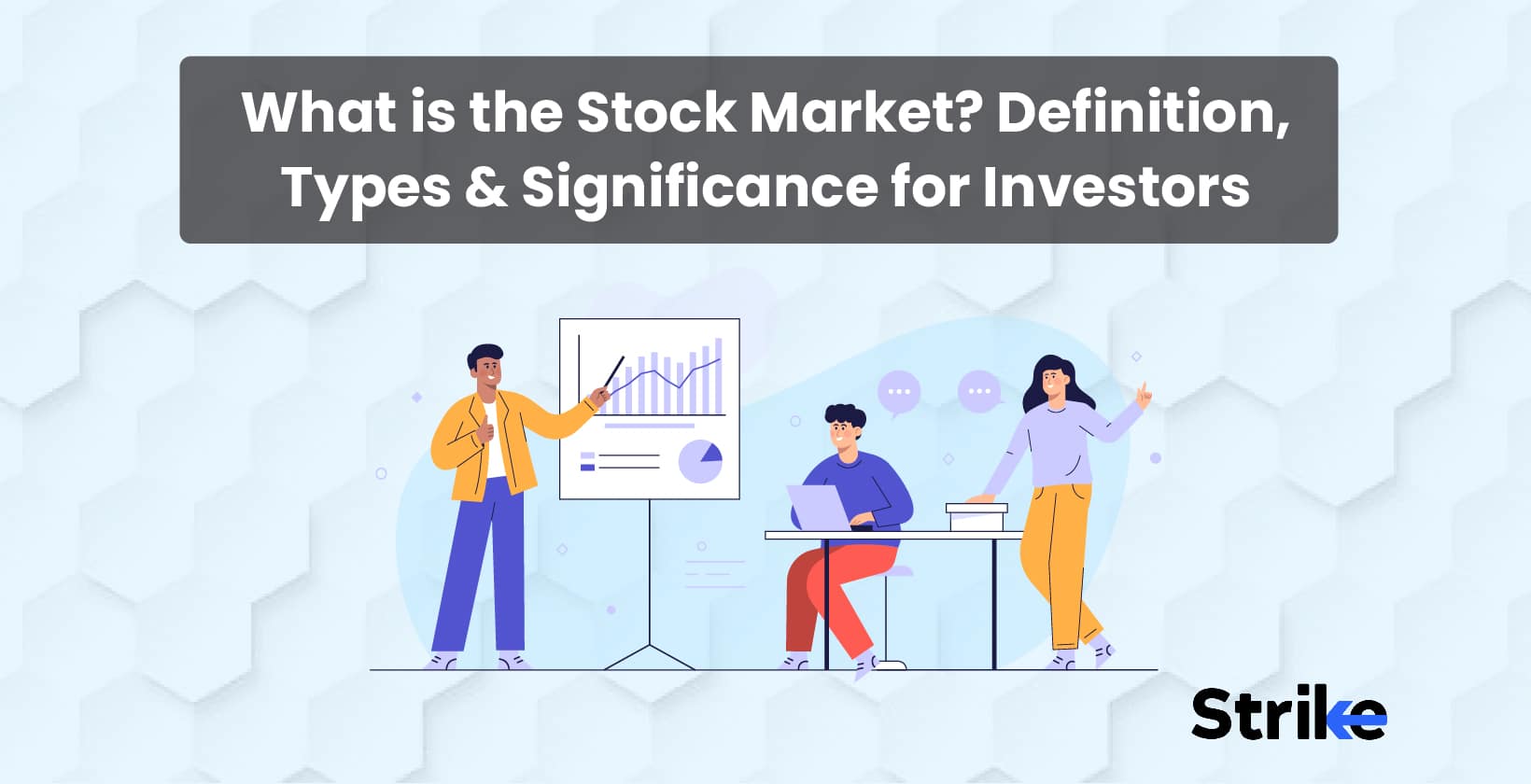
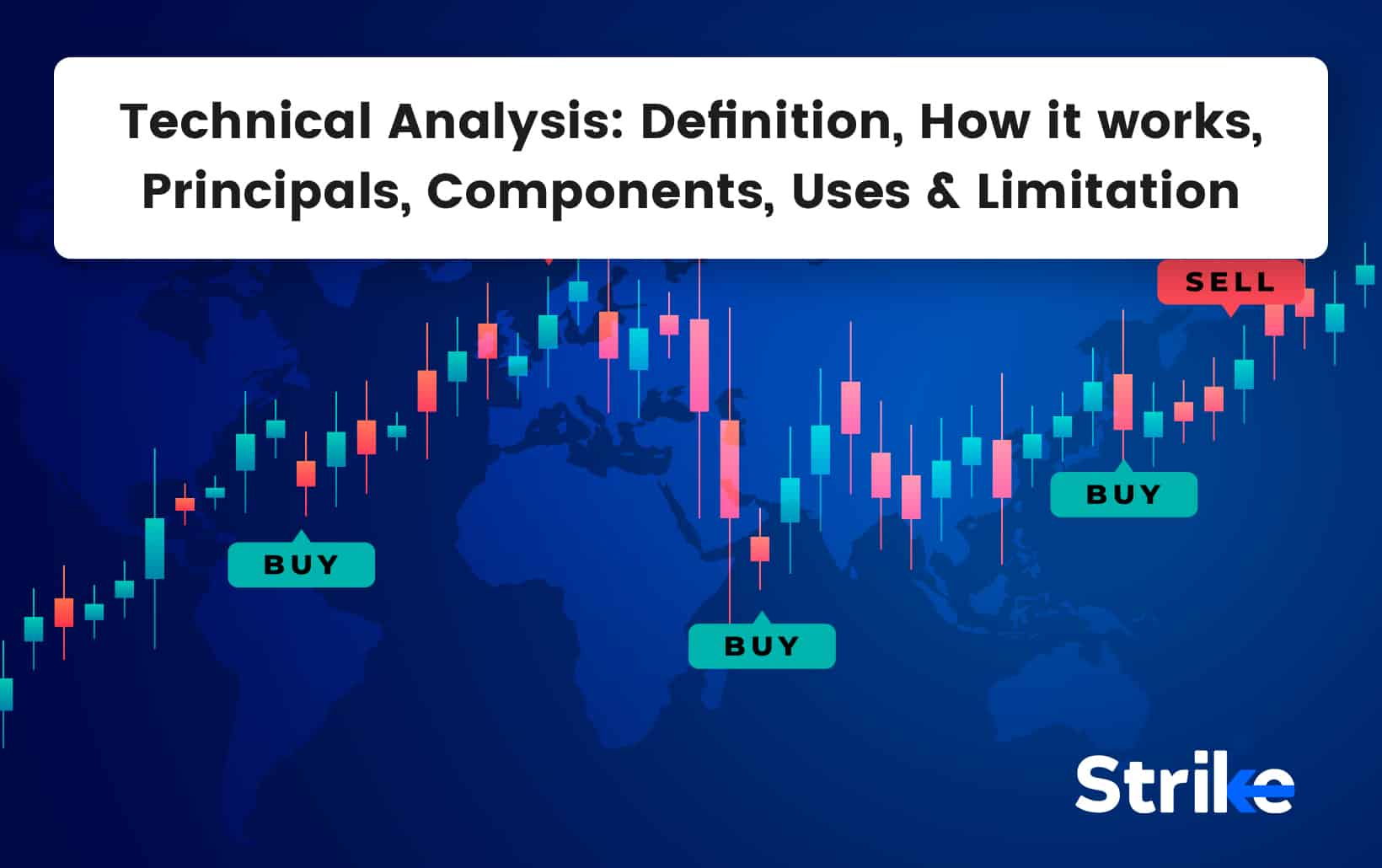
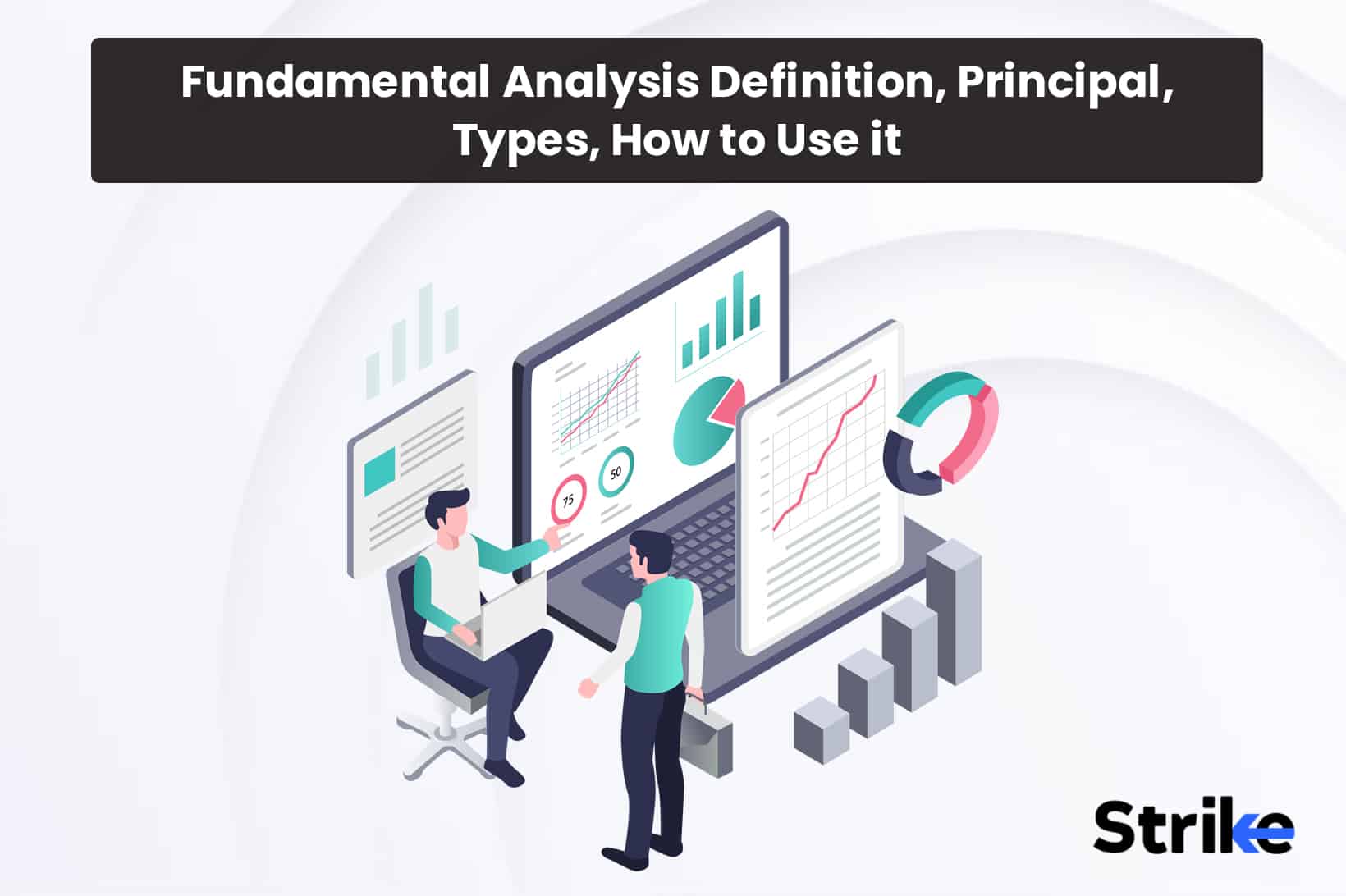
![85 Common Stock Market Terminologies for Dummies [Updated List for 2025] 24 85 Common Stock Market Terminologies for Dummies [Updated List for 2025]](https://www.strike.money/wp-content/uploads/2025/04/Popular-Stock-Market-Terms-for-Beginners-Banner.png)
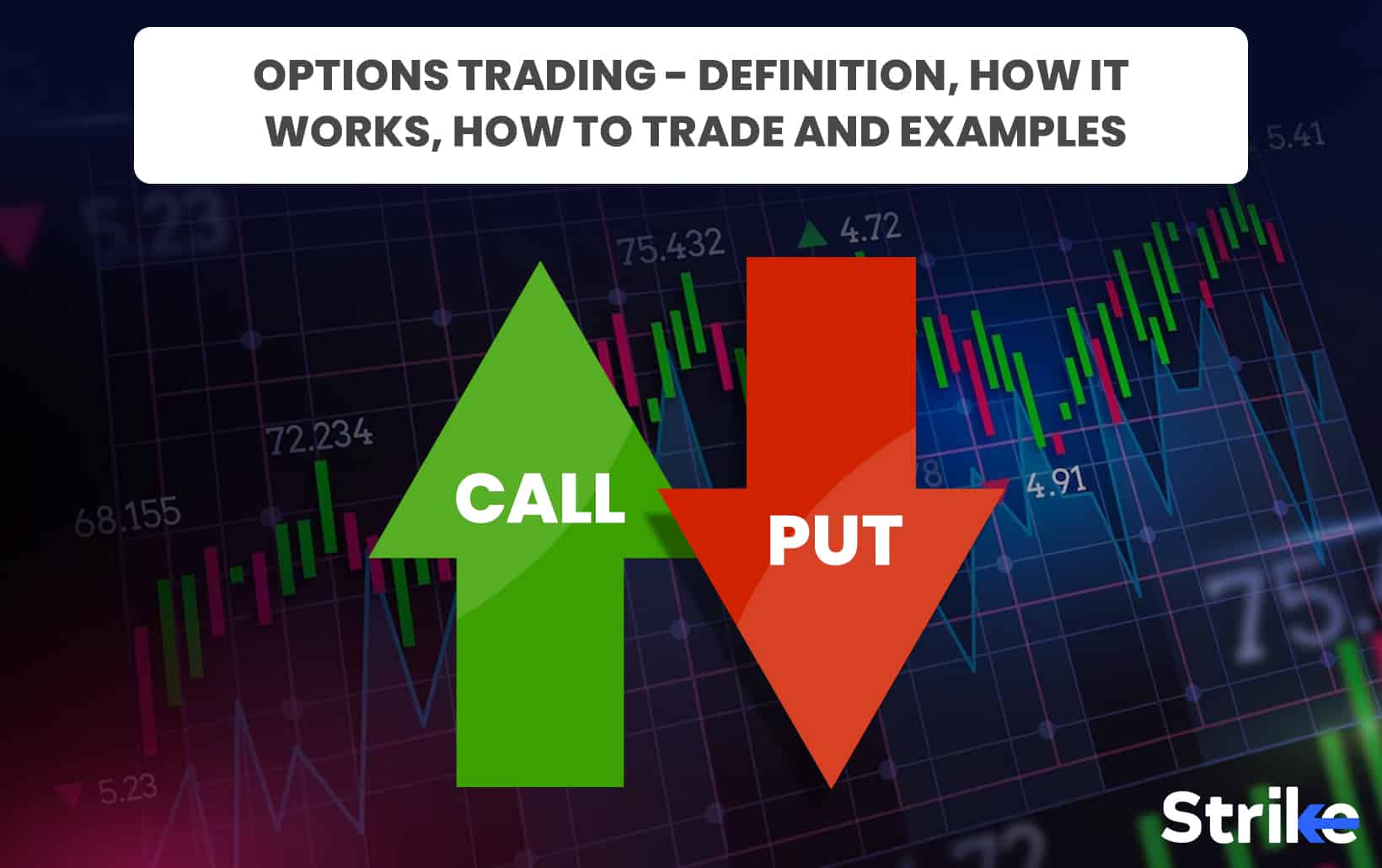
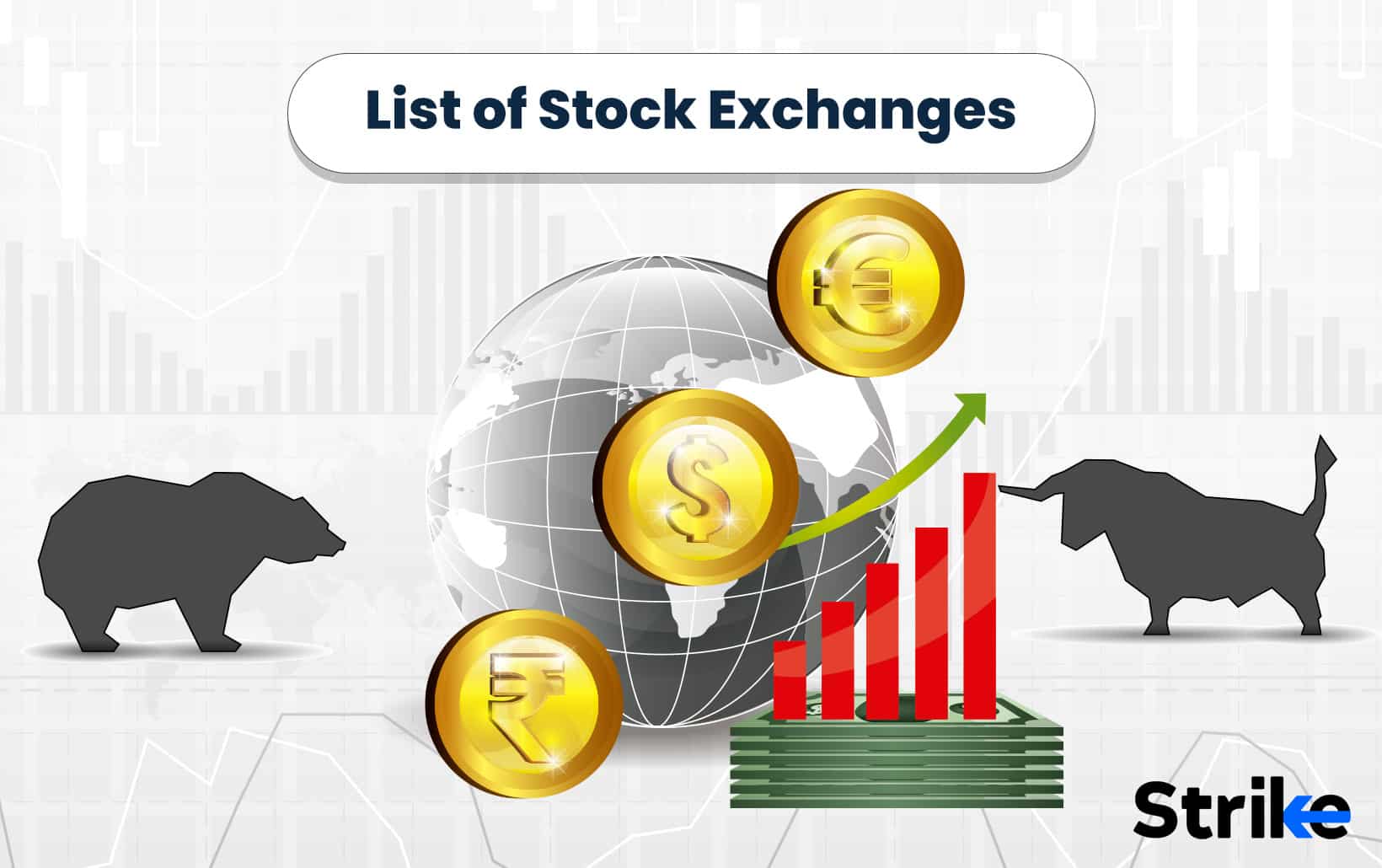
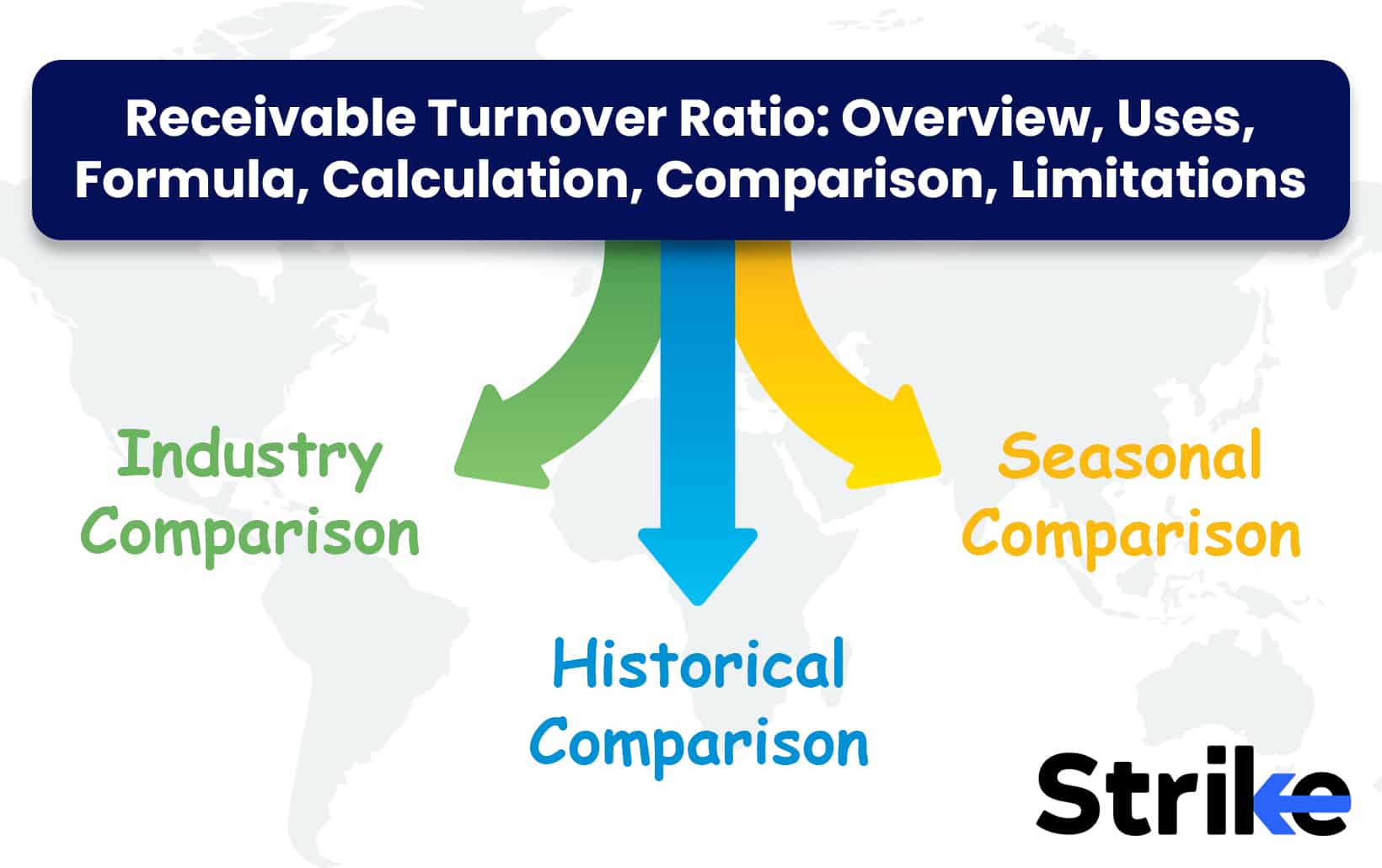
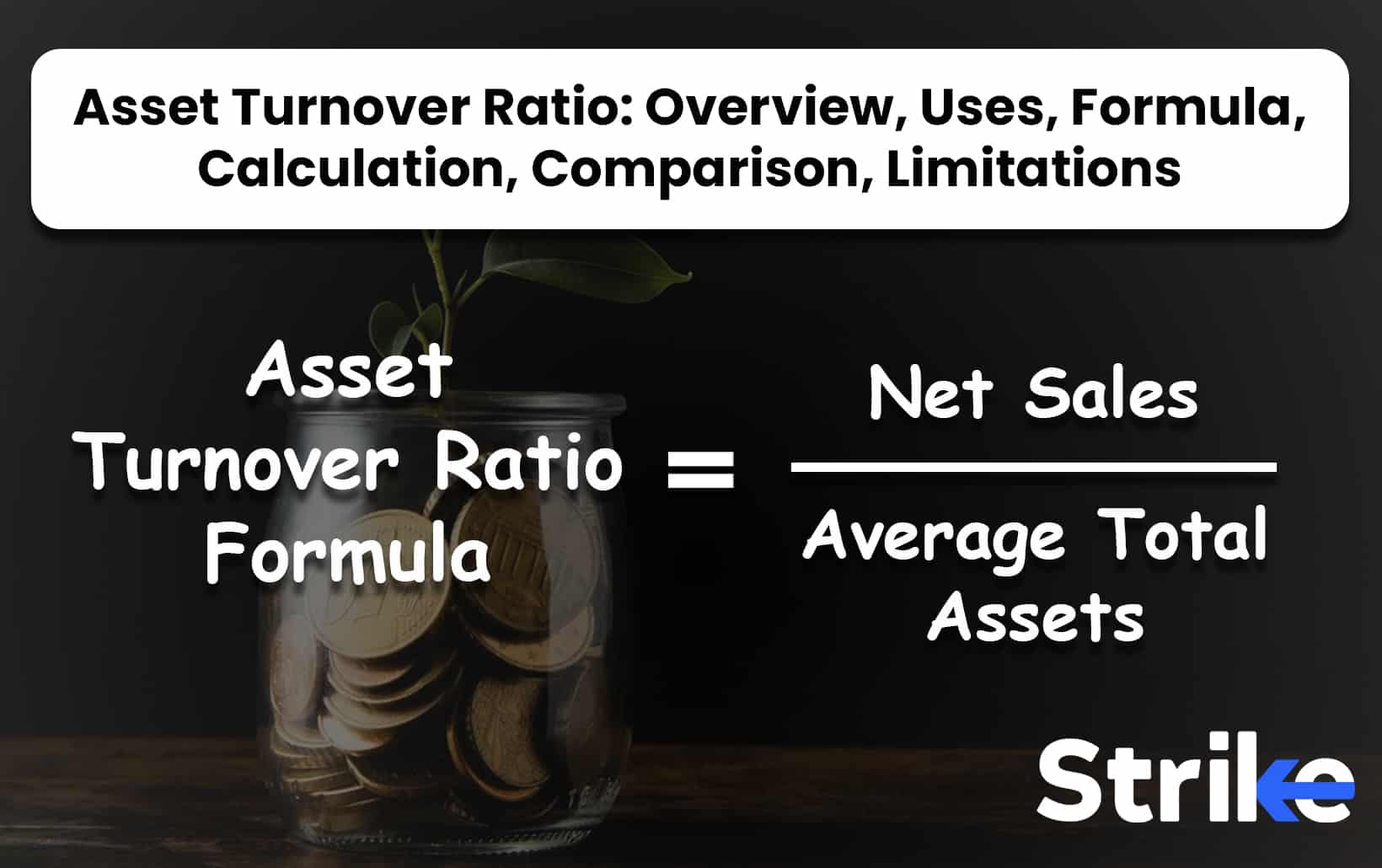
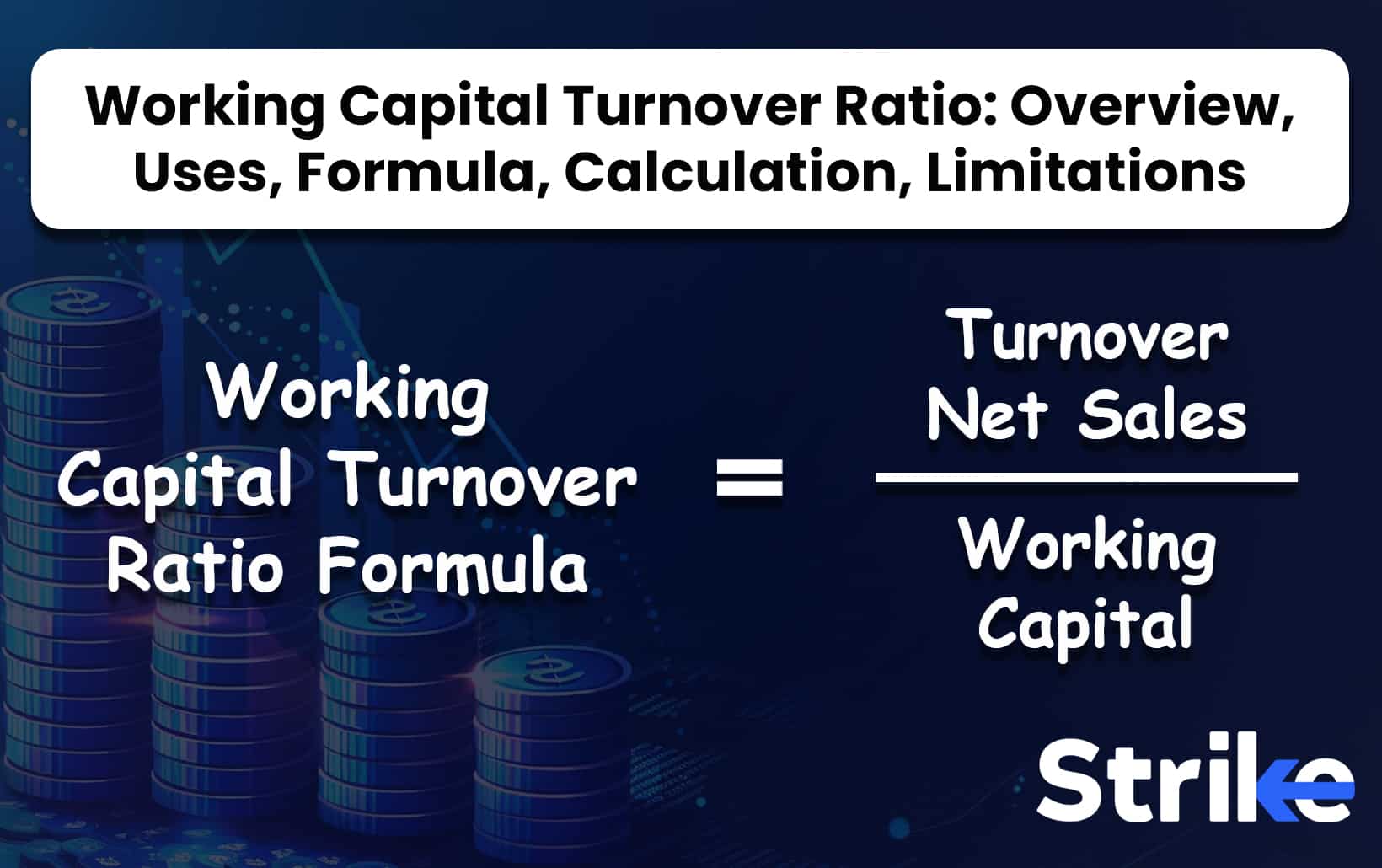
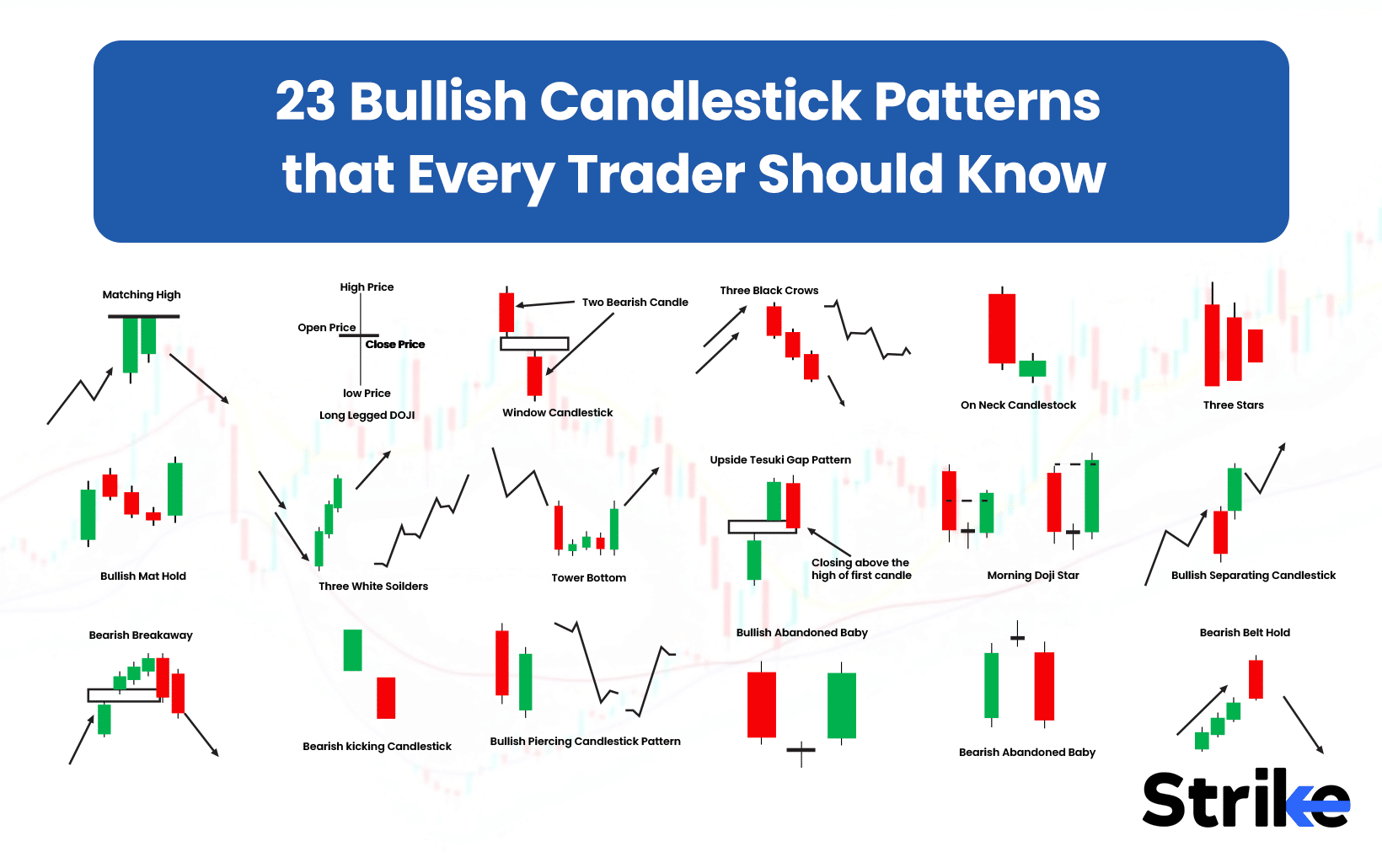

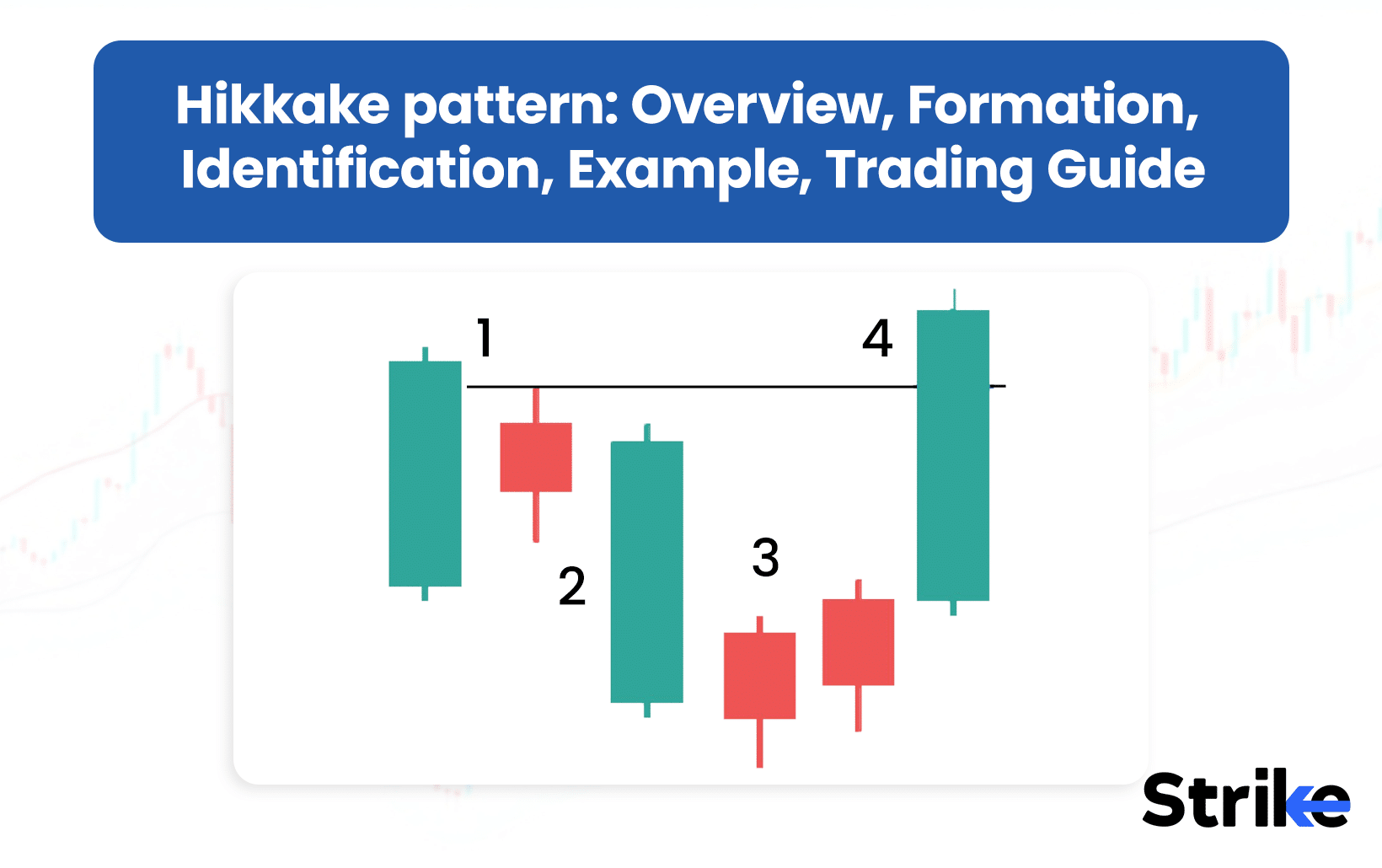

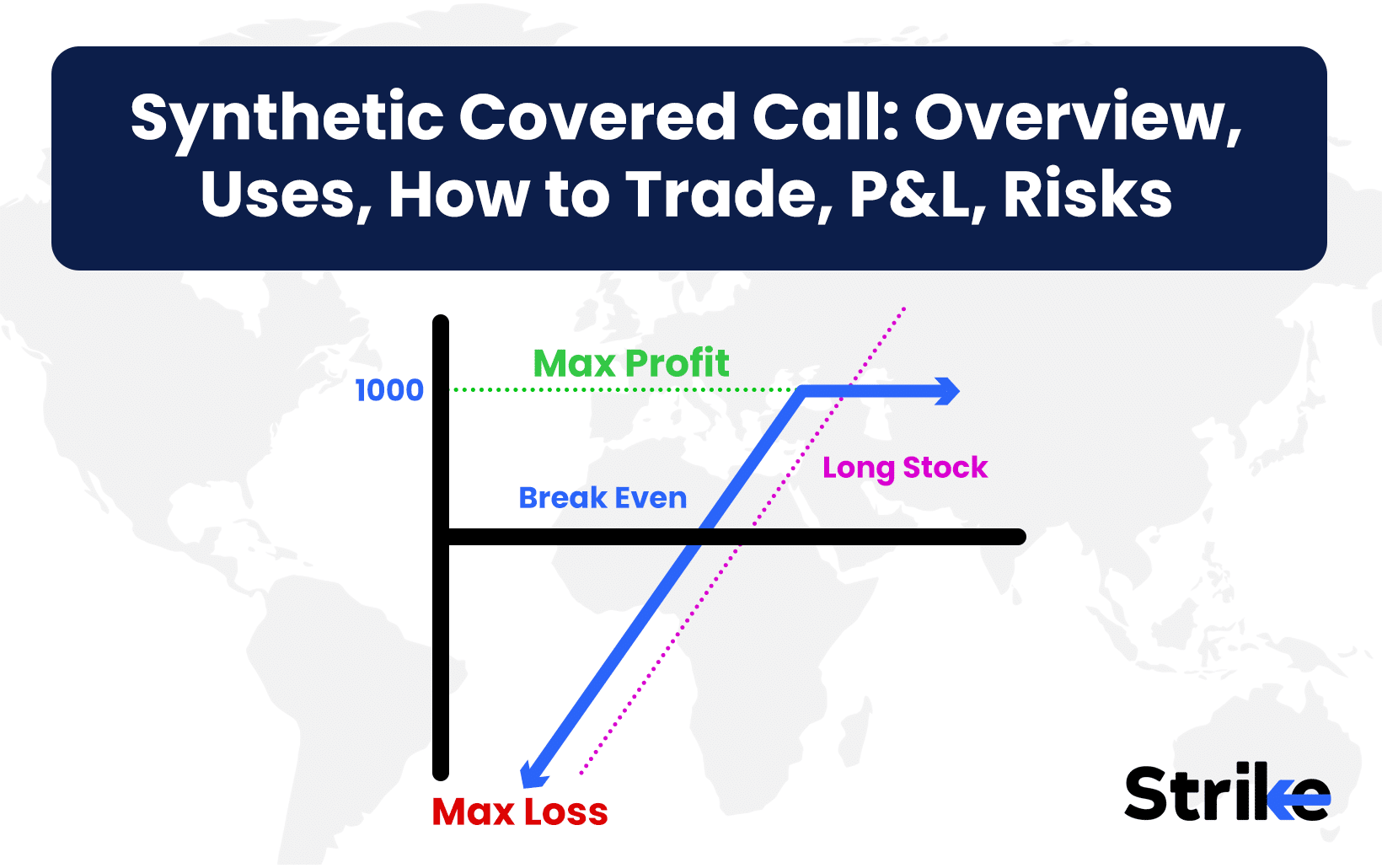

No Comments Yet.